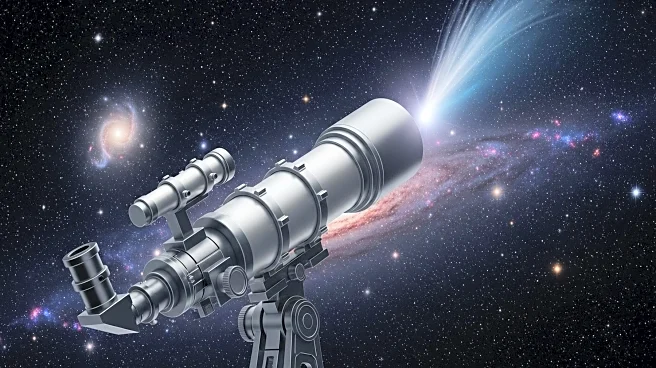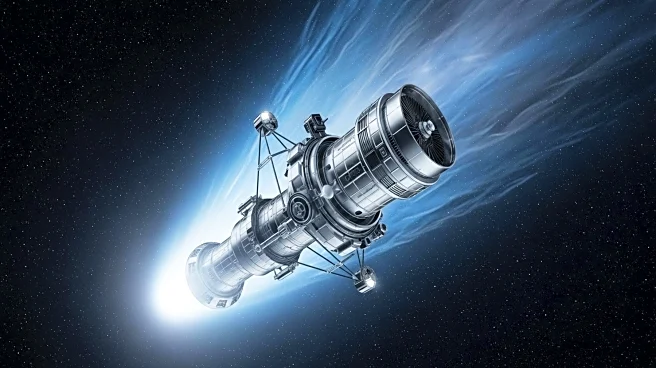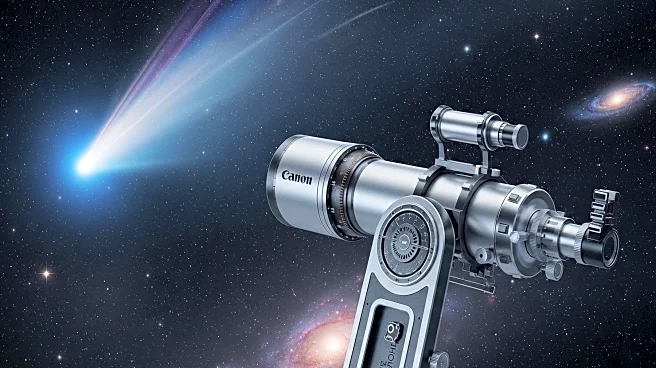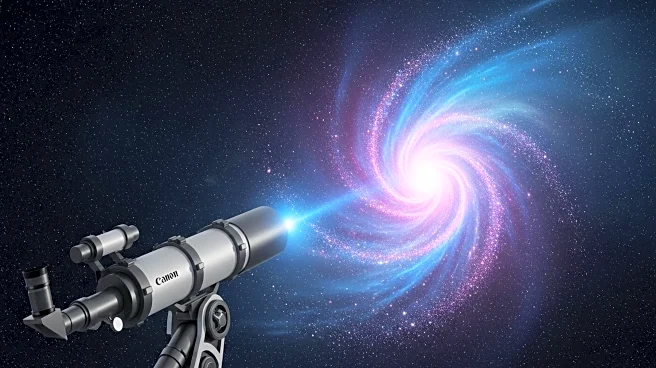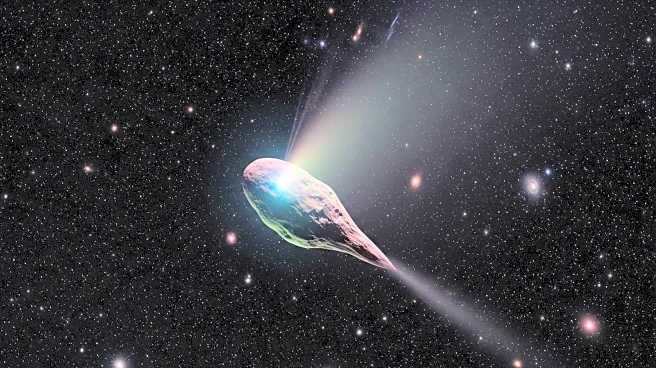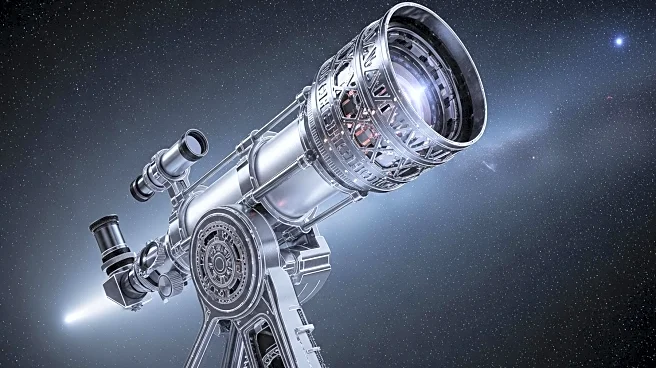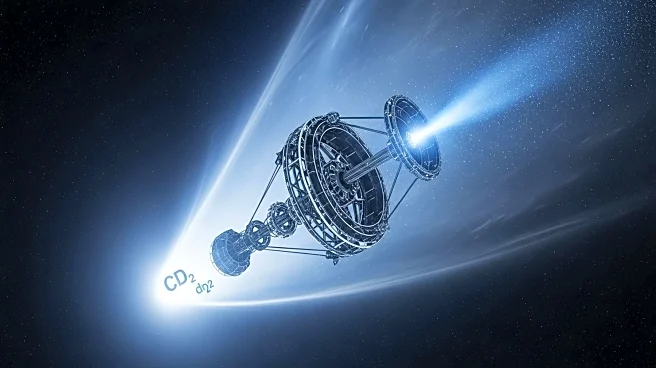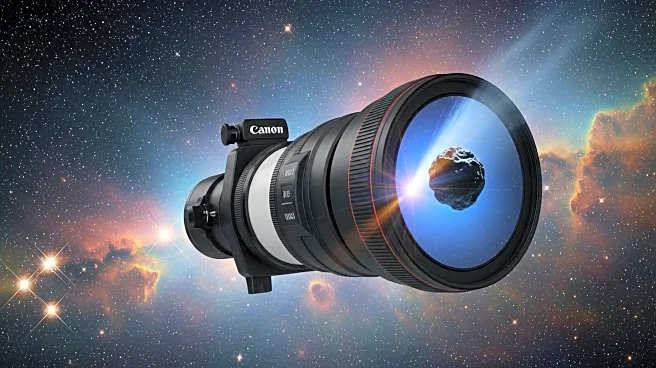What's Happening?
The James Webb Space Telescope has provided new insights into the interstellar object 3I/ATLAS, believed to be a comet. Discovered in July, 3I/ATLAS is traveling at a high speed, indicating its origin from outside the solar system. The telescope's Near-Infrared Spectrograph has revealed that the comet has an unusually high ratio of carbon dioxide to water, suggesting it may have formed in a protoplanetary disk near the CO2 ice line. This discovery, published in a study awaiting peer review, highlights the comet's exposure to radiation levels higher than those found in our solar system. The findings contribute to understanding the physics and chemistry of planet formation in other planetary systems.
Why It's Important?
The discovery of 3I/ATLAS offers a unique opportunity to study materials from outside our solar system, potentially providing insights into the formation of planetary systems. The comet's unusual composition could help scientists understand the conditions in which it formed, offering clues about the early universe. This research could impact theories of planet formation and the distribution of elements in the galaxy. The study of interstellar objects like 3I/ATLAS may also inform future space exploration and the search for extraterrestrial life.
What's Next?
3I/ATLAS is expected to reach its closest point to the Sun, known as perihelion, around October 30, coming within Mars' orbit. As it travels behind the Sun, it will temporarily be unobservable. Continued observations and studies will aim to uncover more details about its origins and history, potentially revealing more about the conditions in distant star systems.
Beyond the Headlines
The study of 3I/ATLAS may have broader implications for understanding the movement and interaction of interstellar objects within our solar system. It could also influence the development of new technologies for tracking and analyzing such objects, enhancing our ability to detect and study them in the future.
